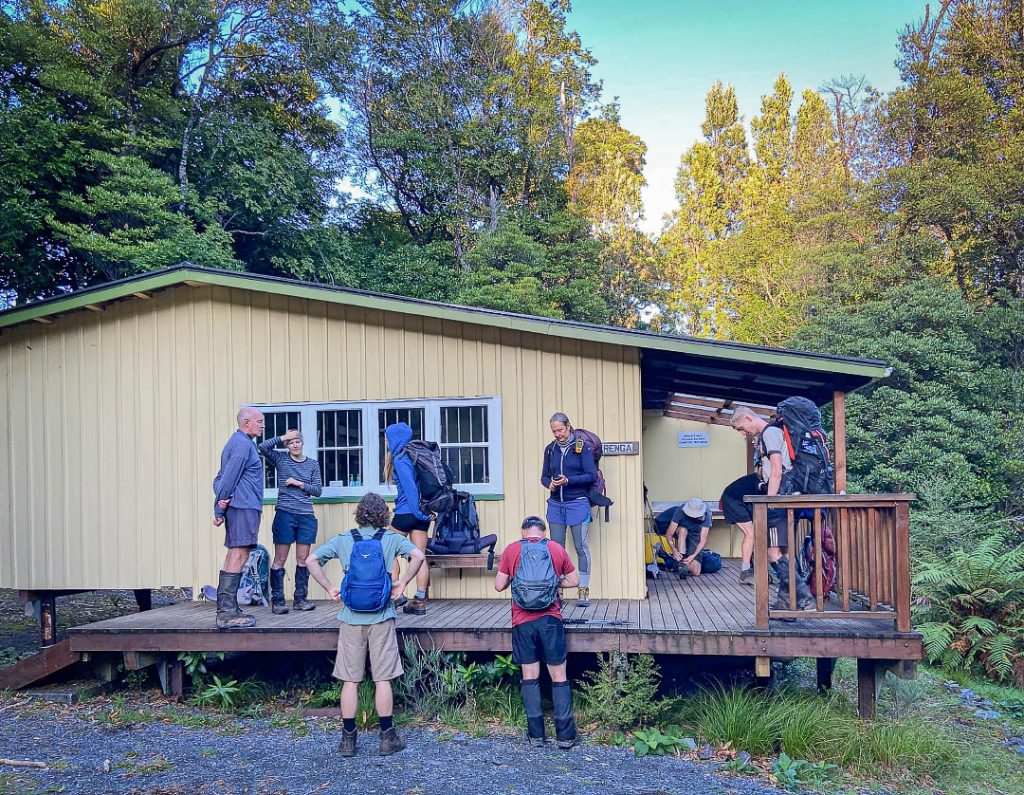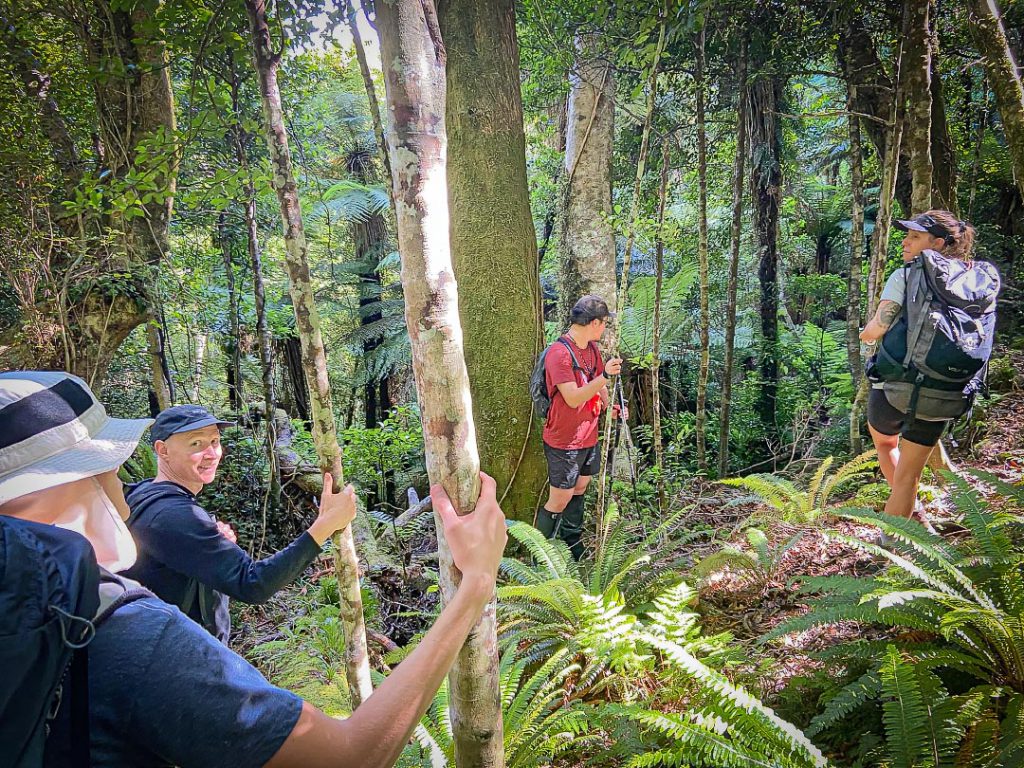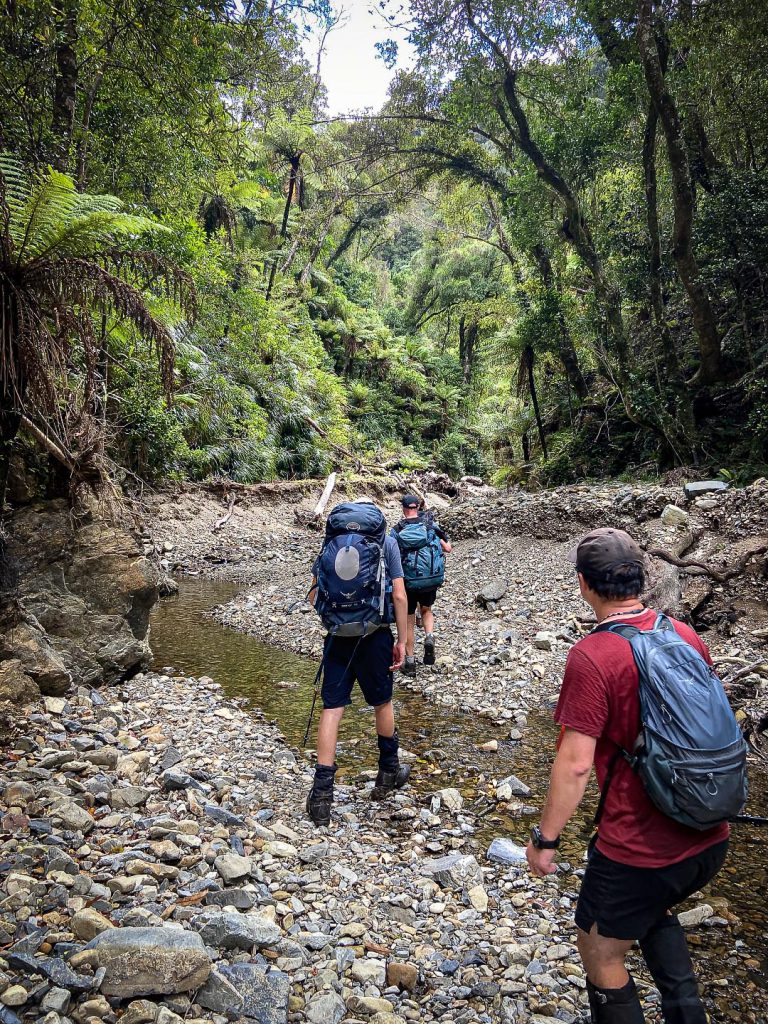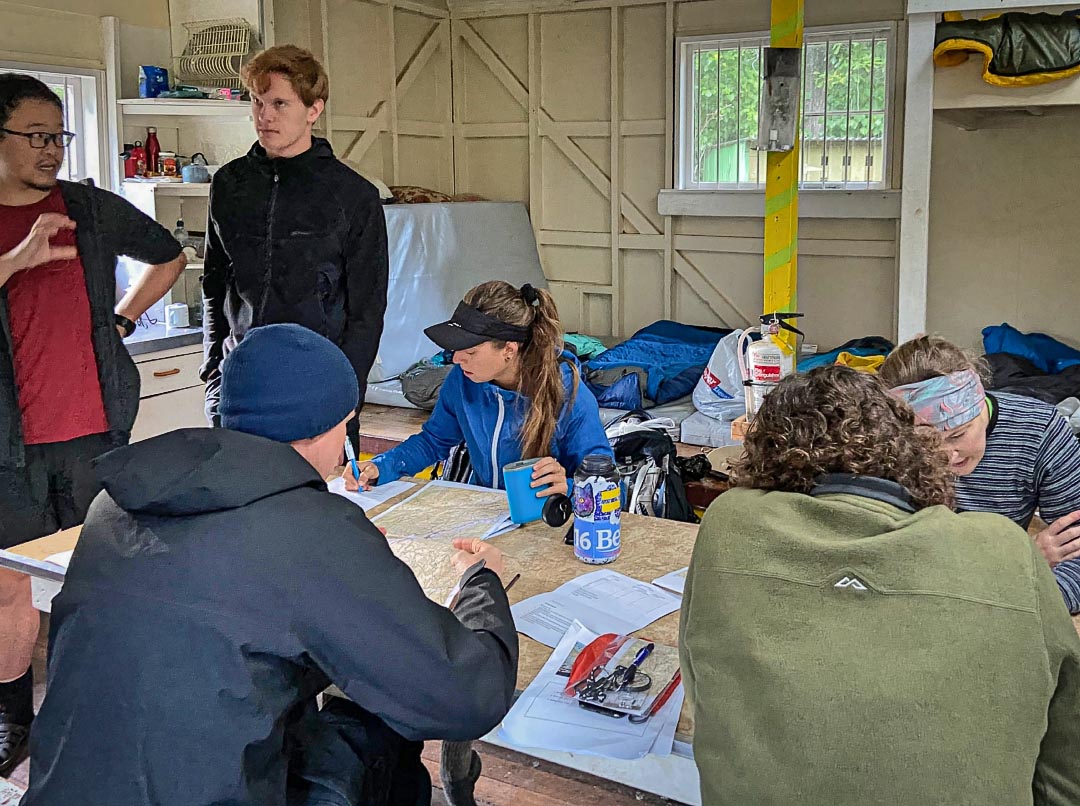In early March WTMC got together with the Tararua Tramping Club to run a leadership course in the Orongorongo Valley.
Although the WTMC runs its own leadership course each year, the two clubs were encouraged to run a joint course through an initiative from FMC to get clubs in a region to pool resources and knowledge to provide leadership training for club members. The FMC essentially covered the cost of the course.
The aim of the course was to provide aspiring leaders with practical experience in leading a real trip while being accompanied by experienced mentors who could provide guidance and advice along the way.
We had nine students and four mentors for the weekend. After dinner there was a theory session on Friday night at the DoC Catchpool Centre which covered mainly the planning and organising of a trip which is often an underestimated part of a trip leader’s time. Then the participants were split into two groups and given their instructions for the next day. This was followed by an easy walk to the TTC Waerenga Hut under a clear and starry sky.
For Saturday each group was given the task of planning a route from our base at the hut to visit two points, Mt MeKerrow, and the Turere Stream waterfall, before heading back to the hut.

One group headed to Mt McKerrow first, while the other group went to the Turere Stream waterfall first, and during the day each person spent time as the leader and made all the decisions about route finding and managing the group while leading.
During the day, the mentors also asked the leader at the time what they would do in various hypothetical situations along the way. At one point Aimee put on such a convincing display of being ill and upset that for a while some students were genuinely concerned. These scenarios would lead to some good discussions about the pros and cons of different options in each situation.


When everyone got back to Waerenga hut we had a debrief about everyone’s experiences of leading during the day – and instructors gave the tasks for Sunday.
This was similar to Saturday’s plan, requiring to the groups to plan a route back to the carpark, but without using tracks for most of the way. This required students to cope with both navigation and route choice and getting everyone through some quite gnarly country. Both groups successfully made it back to the Catchpool, despite the slow bush-bashing along the way, and we were back in Wellington in good time.
Overall, the course was a real success and we are planning on running it again next March, assuming that everything is back to normal by then.
Below is some of the feedback from the weekend:
“I got more confidence from this course to lead my first trip. It gave me a checklist to organize a trip. We had great discussions about pros and cons of what to do in various circumstances. Learning-by-doing is telling and informative about how one reacts.”
“I found the Leadership Course infinitely valuable, in terms of the logistical and organizational aspect of trip planning, but even more important, for me, was the opportunity to practice decision-making in various “real-life” emergency scenarios.”
“I liked being asked what I would do in a variety of emergency situations. It was good to think about and to get feedback on my answers. The weekend gave me more confidence in leading in general.”
“I learnt plenty of things at the leadership weekend, mostly relating to the organisation and logistics that goes into a trip.”
“The practical exercises were a fun way of learning. I gained much from the course and plan to lead trips so other trampers can have fun and safe experiences in our beautiful country.”
“It was good to discuss the sort of things we need to look out for (eg people carrying ridiculous stuff on a day trip!), the expectations we need to establish early on to keep everyone safe (eg stopping at junctions and rivers) and some of the things that might go wrong and what to do (eg when to use a plb). Now we have discussed and explored some of those things I feel like I could establish expectations early in a trip to set the group up to hopefully avoid things going wrong and respond better when it does.”

